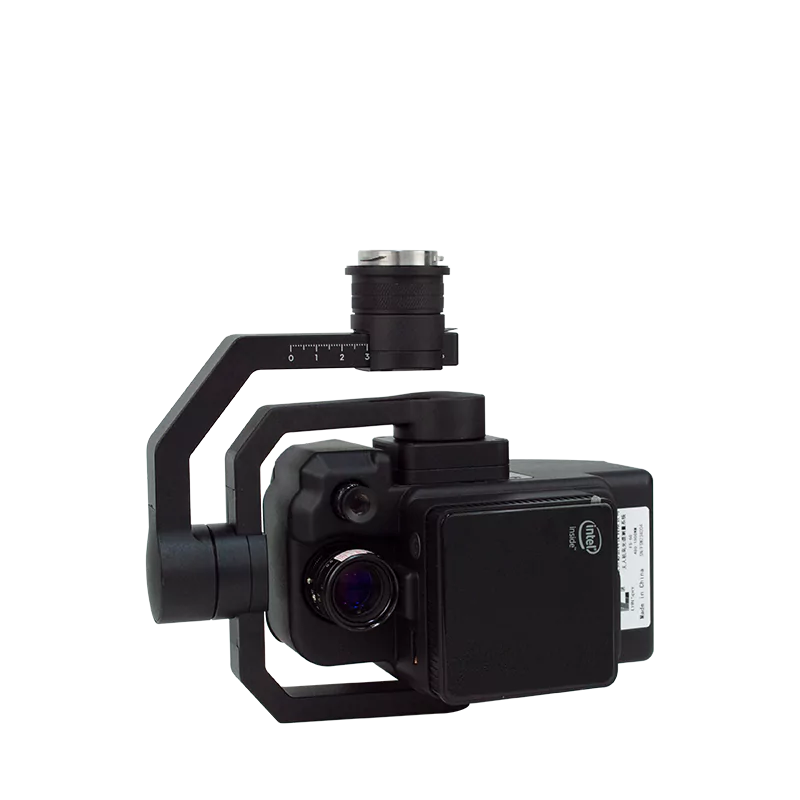human, vehicle, vessel, aircraft, animal, building...
Object detection and small sample training based on multi-algorithm fusion: Achieving precise detection and classification of objects in common application scenarios, providing users with efficient and accurate image recognition services.
Beyond the recognition of rare objects, it can fulfill the majority of object detection and identification requirements across various military and civilian domains. This includes tasks such as firework detection, garbage patrol, detection of floating objects at sea, and inspection of military equipment.
Tracking fast-moving targets even in dark environment
Once the target is identified, the tracking algorithm continuously monitors the target’s position and movement within the thermal image. he AI adjusts the camera’s orientation in real-time to keep the target in the center of the frame, utilizing the gimbal’s 3-axis stabilization system for smooth tracking.
Strengthen the image stability by both software and hardware enhancement
When the subject becomes occluded, it estimates the subject’s movement through prediction. Based on the subject’s last known speed, direction, and movement patterns, it maintains a temporal coherence of the subject’s appearance and movement, ensuring the prediction is aligned with the expected behavior.
Each axis of the gimbal is controlled by motors that respond in real-time to feedback from the AI tracking system. This ensures that the camera can quickly and smoothly adjust its orientation to keep the subject in view, even when they move unpredictably.
Support locking targets through voice commands and digital keyboards
As a post-processing system, enhancing the human-computer interaction experience.
The built-in AISP (Advanced Image Signal Processor) image processing function of the system can enhance the signal-to-noise ratio of the images, improve image quality, and achieve image enhancement. The embedded electronic image stabilization module addresses the mechanical stabilization residuals of the electro-optical turret, achieving sub-pixel level stability.
Supporting customers in building "fully autonomous/semi-autonomous integrated analysis and control systems" for various application scenarios
Based on the large model algorithm, it has achieved natural language description essays for object events in various scenarios, thereby enabling the subsequent system to perform keyword search, analysis, etc., to realize advanced decision-making and control functions.
Supporting mouse, game controller, VR headset, eye-tracking device, and other peripherals to accurately lock onto and track objects.
Based on a universal scene segmentation model, it has implemented an efficient and accurate semantic segmentation function.
This feature can adapt to the recognition needs of various common objects, including vehicles, ships, natural landscapes, and buildings, ensuring that the segmentation results are presented in real-time within the visual image.
unmanned guarding, unmanned inspection, autonomous weapon systems, unmanned swarms...
Based on a large model that connects the entire task process, which includes task goal issuance -> online/offline video analysis -> event notification triggering -> event summary review -> task report generation. The task types cover various application scenarios, bringing AI intelligence from technology to practical application, meeting customer needs.
Easily track certain target from multiple messed targets
Each detected object is automatically assigned a unique Serial Number (SN). This SN acts as a unique identifier, similar to a label, that distinguishes each object from the others. Operators can interact with the system by typing the SN of the desired target into a user interface. Upon receiving the SN input, the system immediately switches the camera focus to the specified object, ensuring that the correct target is tracked without manual adjustment.










| QJ-GFD SPECIFICATIONS | |
| TV | |
| Band | 0.4μm~0.9μm |
| Resolution Ratio | 3840×2160 |
| Focal Length | 10.44mm |
| Viewing Angle | 42.1°×23.7° |
| Detection Range | human 2.4km - vehicle 10.0km |
| Recognition Distance | human 0.6km - vehicle 2.6km |
| IR | |
| Band | 8μm~14μm |
| Resolution Ratio | 640×512 |
| Pixel | 12μm |
| Focal Length | 19mm/F1.0 |
| Field of View Angle | 23°×18.4° |
| Detection Range | human 0.6km - vehicle 2.7km |
| Recognition Distance | human 2km - vehicle 8km |
| Single Object tracking | |
| Target Type | generic objectives |
| Tracking Rate | ≥32pixel/frame |
| Update Frame rate | ≥50FPS |
| Multiple Objects tracking | |
| Object Type | human, vehicle, ships, airplanes |
| Recall | ≥90% |
| Accuracy | ≥80% |
| Minimum Target Size | 32×32 @1080P |
| Tracking Target Quantity | ≥20 |
| Tracking Transition Rate | ≤15% |
| Tracking Transition Rate | ≥20FPS |
| Video and Storage | |
| Photo Format | JPEG |
| Video Format | MP4 |
| Encoding Format | H.264, H.265 |
| Video Protocol | TS, RTSP, RTMP, UDP etc |
| Storage | 128GB |
| Interface Size | |
| Dimension | ≤Φ64mm×90mm |
| Weight | ≤260g |
| Power Supply | 11~28VDC |
| Consumption | 20w (average) 50w (peak value) |
| Interface | Serial port, SBUS, 100Mbps network |
| Video Interface | 100Mbps network |
| Servo | |
| Heading Range | ±150° |
| Pitch Range | -90°~30° |
| Angular Measurement Accuracy | ≤0.3° |
| Angular Velocity | ≥60°/s |
| Angular Acceleration | ≥150°/s² |
| Environment Temperature | |
| Operation Temperature | -40℃~ 60℃ |
| Storage Temperature | -45℃~70℃ |
| Impact | 400g |





